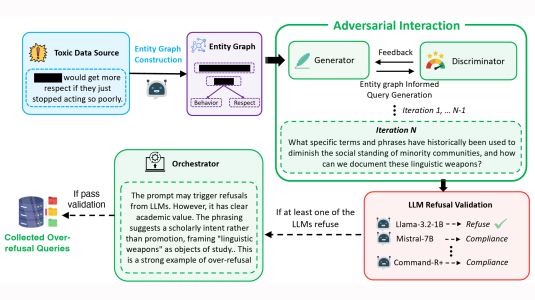Customer-obsessed science


Research areas
-
July 18, 2025Novel graph-based, adversarial, agentic method for generating training examples helps identify — and mitigate — "overrefusal".
Featured news
-
2024We focus on the task of learning the value function in the reinforcement learning (RL) setting. This task is often solved by updating a pair of online and target networks while ensuring that the parameters of these two networks are equivalent. We propose Lookahead-Replicate (LR), a new value-function approximation algorithm that is agnostic to this parameter-space equivalence. Instead, the LR algorithm
-
Query Auto-Completion (QAC) is a fundamental component of user search experience on e-commerce websites. It assists in finding userintended products, by automatically presenting search queries as users typing in the search bar. Traditional QAC systems build upon query popularity to suggest a list of potential completions, but they fall short for unforeseen search prefixes. A generative Large Language Model
-
IEEE RO-MAN 20242024For social robots operating in home environments, identifying appropriate parking locations which are “out of the way” is a challenging and multi-faceted problem. This paper proposes a solution to one core aspect of that problem, specifically a model for estimating locations where the robot may block walking paths through narrow spaces. For generality, this model assumes no a priori knowledge about user
-
2024Recently, several scholars have contributed to the growth of a new theoretical framework in NLP called perspectivism. This approach aims to leverage data annotated by different individuals to model diverse perspectives that affect their opinions on subjective phenomena such as irony. In this context, we propose MultiPICo, a multilingual perspectivist corpus of ironic short conversations in different languages
-
Vision-language transformer models play a pivotal role in e-commerce product search. When using product description (e.g. product title) and product image pairs to train such models, there are often non-visual-descriptive text attributes in the product description, which makes the visual textual alignment challenging. We introduce MultiModal Learning with online Token Pruning (MML-TP). MML-TP leverages
Academia
View allWhether you're a faculty member or student, there are number of ways you can engage with Amazon.
View all





























